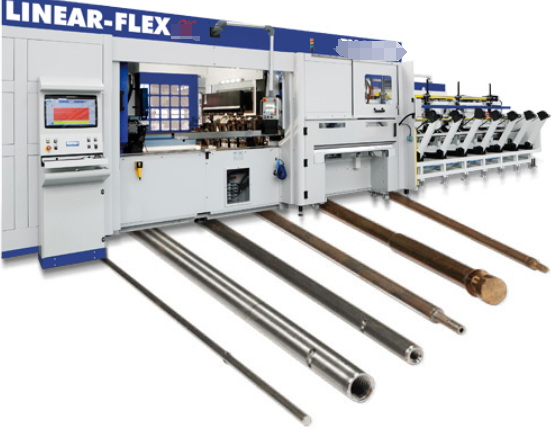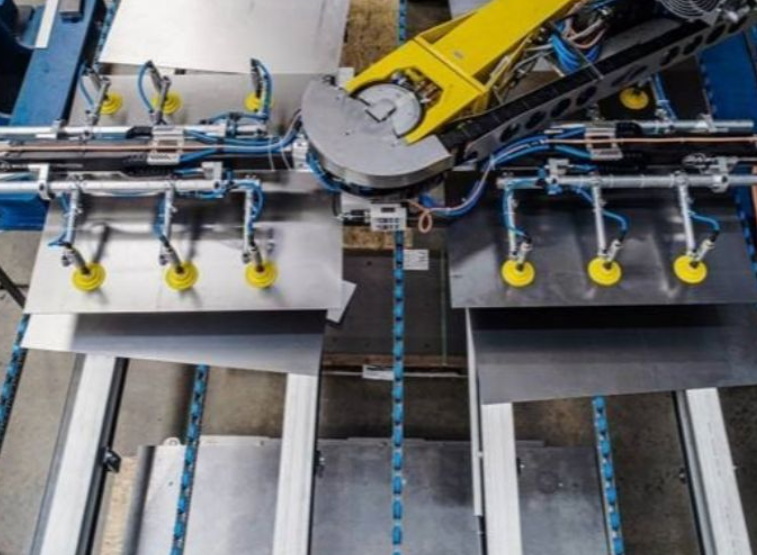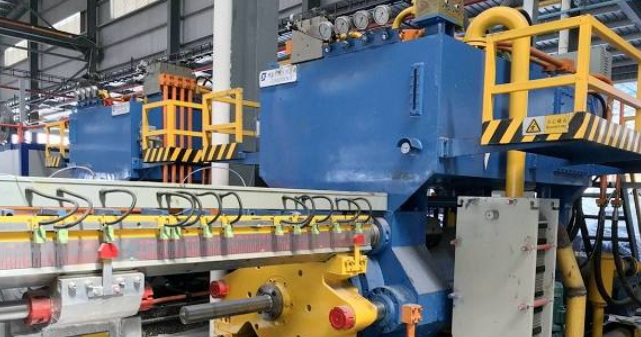Content Menu
● Introduction to Blown Film Extrusion
>> Key Components of Blown Film Extrusion Equipment
● Methods to Improve Efficiency
>> 1. Optimize Machine Equipment
>> 2. Use High-Quality Raw Materials
>> 3. Regular Maintenance and Care
>> 4. Training and Skill Enhancement
>> 5. Implement Advanced Technologies
>> 6. Optimize Cooling Systems
>> 7. Energy Efficiency
● Advanced Technologies in Blown Film Extrusion
>> 1. Co-Extrusion Technology
>> 2. Automated Systems
>> 3. Multilayer Film Production
>> 4. Eco-Friendly and Sustainable Production Practices
>> 5. Bio-Based Polymers
● Innovations in Blown Film Technology
● Benefits of Advanced Blown Film Extrusion Lines
● Enhancing Conversion Efficiency
● Pearl's Extrusion Solutions
● Conclusion
● FAQs
>> 1. What are the key components of blown film extrusion equipment?
>> 2. How does gravimetric dosing improve efficiency?
>> 3. What is the role of internal bubble cooling in blown film extrusion?
>> 4. How does co-extrusion technology benefit film production?
>> 5. Why is regular maintenance important for blown film extrusion equipment?
● Citations:
Blown film extrusion is a widely used process for manufacturing plastic films, which are essential in packaging, agriculture, and various industrial applications. The efficiency of blown film extrusion equipment directly impacts the quality and cost-effectiveness of the final product. In this article, we will explore methods to enhance the efficiency of blown film extrusion equipment, including optimizing machine components, improving material handling, and implementing advanced technologies.

Introduction to Blown Film Extrusion
Blown film extrusion involves melting plastic pellets in an extruder, then forcing the molten material through a circular die to form a tube. This tube is inflated with air to create a bubble, which is cooled and collapsed into a flat film. The process requires precise control over temperature, pressure, and cooling rates to achieve consistent film quality.
Key Components of Blown Film Extrusion Equipment
1. Extruder: Responsible for melting and mixing the plastic pellets.
2. Die: Shapes the molten plastic into a tubular form.
3. Air Ring: Controls bubble size and cooling.
4. Cooling System: Essential for solidifying the film.
5. Winding Equipment: Rolls the finished film into manageable sizes.
Methods to Improve Efficiency
1. Optimize Machine Equipment
- Upgraded Die Heads: Utilize high-quality alloy materials for better heat distribution and durability.
- Advanced Screws: Double alloy screws with optimized designs enhance material mixing and melting efficiency.
- Reinforced Machine Frames: Larger and sturdier frames ensure stability during operation.
2. Use High-Quality Raw Materials
Using consistent and high-quality raw materials ensures uniform film properties and reduces defects. This includes selecting the right types of polyethylene (e.g., LDPE, LLDPE) for specific applications.
3. Regular Maintenance and Care
Regular maintenance is crucial for maintaining efficiency. This includes cleaning the die, checking for wear on screws and barrels, and ensuring proper alignment of the air ring.
4. Training and Skill Enhancement
Operators should be trained on the latest techniques and technologies to optimize production processes and troubleshoot issues efficiently.
5. Implement Advanced Technologies
- Gravimetric Dosing Systems: Ensure precise control over material ratios, improving film consistency.
- Automatic Gauge Control: Maintains uniform film thickness, reducing waste and improving quality.
6. Optimize Cooling Systems
- Internal Bubble Cooling (IBC): Enhances cooling efficiency, allowing for higher production rates.
- Outer Air Cooling: Proper blower sizing and chilled air improve bubble stability and output.
7. Energy Efficiency
- High-Efficiency Motors: Reduce energy consumption while maintaining performance.
- Variable-Speed Drives: Optimize motor speed to match production needs.
Advanced Technologies in Blown Film Extrusion
1. Co-Extrusion Technology
Co-extrusion allows for the production of multilayer films with different properties, enhancing barrier performance and reducing material costs. Modern advancements include the ability to produce films with up to five layers, which offer improved strength and sealing properties[1][3].
2. Automated Systems
Automated systems, such as PLC controls and robotic assistants, streamline production and reduce human error. These systems can integrate with AI to optimize production processes, reduce waste, and ensure consistent product quality[3].
3. Multilayer Film Production
Manufacturers are increasingly shifting towards multilayer film structures to enhance film properties. Multilayer films offer improved barrier properties, mechanical strength, and versatility, which are crucial for packaging solutions that require durability and resistance to various environmental factors[3][5].
4. Eco-Friendly and Sustainable Production Practices
Sustainability is becoming a cornerstone in the blown film extrusion industry. There is a growing emphasis on reducing carbon footprints and enhancing energy efficiency. New technologies are being developed to make extrusion processes more energy-efficient, such as improved cooling systems and the use of renewable energy sources[3].
5. Bio-Based Polymers
The adoption of bio-based polymers in blown film extrusion is increasing. Bio-based materials not only help reduce the reliance on fossil fuels but also offer the potential for lower greenhouse gas emissions during production. These materials are gaining traction, especially in industries where compostable and eco-friendly packaging is valued[3].

Innovations in Blown Film Technology
Modern blown film technology has evolved to meet the demands of industries seeking efficiency, precision, and sustainability. Key innovations include:
- Multilayer Films: Advanced systems can produce films with up to five layers, allowing for enhanced performance characteristics such as improved strength and sealing properties[1].
- Material Flexibility: Blown film extrusion lines can process a wide range of plastics, including polyolefins, biodegradable polymers, and recycled materials, supporting sustainability goals[1].
- Enhanced Cooling Systems: Innovations like internal bubble cooling (IBC) ensure better control over film thickness and quality while optimizing energy efficiency[1][3].
- Automated Controls: Control systems offer precise control over film dimensions, material flow, and layer configurations, ensuring consistent production at high speeds[1].
Benefits of Advanced Blown Film Extrusion Lines
Advanced blown film extrusion lines, such as those capable of producing 7, 9, or 11 layers, offer several benefits over traditional lines:
- Improved Film Quality: These lines produce films with superior mechanical strength, better barrier properties, and increased puncture resistance[5].
- Enhanced Production Efficiency: They can produce films at higher speeds, reducing production time and costs[5].
- Increased Customizability: Greater flexibility in terms of film thickness, width, and color to meet specific requirements[5].
- Better Sustainability: Reduced material usage and energy consumption contribute to a lower environmental footprint[5].
Enhancing Conversion Efficiency
Technologies like the EVO Ultra Flat haul-off system improve film flatness and reduce camber, enhancing conversion efficiency. This results in faster printing speeds and reduced adhesive consumption during lamination[8].
Pearl's Extrusion Solutions
Pearl Technologies offers a suite of blown film process enhancements, including:
- Z-Lift Units: Provide smooth vertical adjustments to the bubble.
- Bubble Guides and Arms: Keep the bubble centered.
- Gusset Boards: Ensure proper folding for gusseted film.
- Collapsing Tents and Side Guides: Streamline film flattening.
- Pre-nip Chiller: Reduces film temperature before contact with nip rollers.
- Airless Turning Bars and Fixed Non-turning Idlers: Minimize friction and surface damage.
- Spreader Bars: Eliminate wrinkles and edge folds[2].
Conclusion
Improving efficiency in blown film extrusion equipment involves a combination of optimizing machine components, using high-quality raw materials, regular maintenance, advanced technologies, and skilled operators. By implementing these strategies, manufacturers can enhance product quality, reduce waste, and increase productivity.

FAQs
1. What are the key components of blown film extrusion equipment?
The key components include the extruder, die, air ring, cooling system, and winding equipment. Each plays a crucial role in producing high-quality films.
2. How does gravimetric dosing improve efficiency?
Gravimetric dosing ensures precise control over material ratios, leading to consistent film properties and reduced waste.
3. What is the role of internal bubble cooling in blown film extrusion?
Internal bubble cooling enhances cooling efficiency, allowing for higher production rates and better film quality.
4. How does co-extrusion technology benefit film production?
Co-extrusion allows for the creation of multilayer films with enhanced barrier properties, reducing material costs and improving performance.
5. Why is regular maintenance important for blown film extrusion equipment?
Regular maintenance ensures that equipment operates at optimal levels, reducing downtime and improving overall efficiency.
Citations:
[1] https://www.mechitronic.com/solution/plastic-extrusion/blown-film/
[2] https://www.pearltechinc.com/2025/02/13/extrusion-equipment-blown-film-efficiency/
[3] https://www.verifiedmarketreports.com/blog/top-7-trends-transforming-the-blown-film-extrusion-lines-market/
[4] https://jieyatwinscrew.com/blog/blown-film-extrusion/
[5] https://www.plastar-machine.com/en/article/benefits-of-7-9-11-layer-blown-film-extrusion-line-over-3-5-layer.html
[6] https://www.plastar-machine.com/en/article/Leading-the-trend-of-film-innovation.html
[7] https://www.wevolver.com/article/extruding-plastic
[8] https://reifenhauser.com/en/company/media/news-and-stories/success-story/blown-film-extrusion-enhancing-conversion
[9] https://www.ptonline.com/articles/get-ready-to-be-blown-away-with-new-extrusion-technology
[10] https://www.pearltechinc.com/2024/05/06/guide-to-blown-film-extrusion/
[11] https://www.plasco.com.tw/en/article/ABA-Blown-Film-Extrusion-Boost-Efficiency-Reduce-Costs.html
[12] https://www.prm-taiwan.com/blog/optimized-blown-film-technology-keys-to-sustainable-packaging_464
[13] https://www.polystarco.com/blog-detail/advanced-yet-easy-to-use-blown-film-extrusion-technology-key-to-eco-friendly-packaging/
[14] https://octagon-company.com/film-extruder-upgrade/
[15] https://www.linkedin.com/pulse/blown-film-co-extrusion-machine-market-size-2025-navigating-kwcwc/
[16] https://www.swallowmachinery.com/knowledge-base/innovative-applications-of-blown-film-technology
[17] https://plasticstouchpoint.com/wp-content/uploads/2020/12/Seven_Simple_Steps_to_More_Efficient_Blown_Film_Extrusion_Plastics_Technology_Magazine_Feb_2010.pdf
[18] https://southeast.newschannelnebraska.com/story/52174264/comprehensive-trends-in-the-blown-film-extrusion-lines-market-growth-and-forecast-for-2024
[19] https://eupegypt.com/blog/blown-film-extrusion/
[20] https://www.bn.saint-gobain.com/blog/realizing-greater-efficiencies-blown-film-extrusion-processing-aids






















